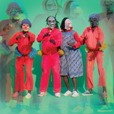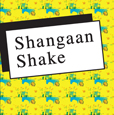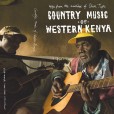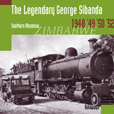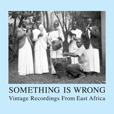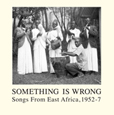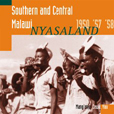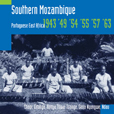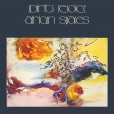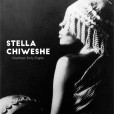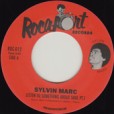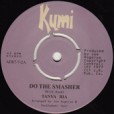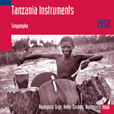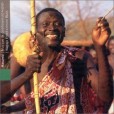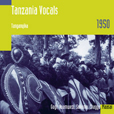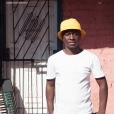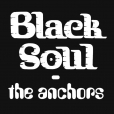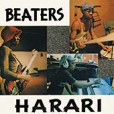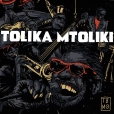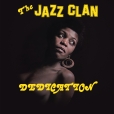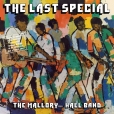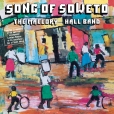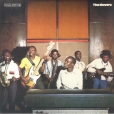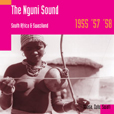Your basket is empty

An astounding compilation of the breakneck Shangaan dance output of the Nozinja studio in Soweto, recorded between 2006 and 2009.
His fine guitar-picking and upbeat, carefree songs brought George Sibanda from Bulawayo the fame throughout southern Africa — and he was versioned in the US — which drove him to drink and an early grave.
Thirty-five stingers from an HMV run of more than four hundred 78s, recordings made in Uganda and Kenya from the mid-1930s till the mid-1950s.
The second half of the CD.
The bangwe board zither, gourd kazoo big bands, tuned likhuba drum ensembles, virtuoso xylophone, a capella singing.
Sena and Ndau mbiras; Shangaan singing, drumming and xylophones; Chopi reedpipes and timbila xylophone orchestras, little girls playing ocarinas; Gitonga drums and singing horns.
‘At a distance of more than forty years, the radicalism and significance of African Spaces can be seen more clearly. Ambitious, uncompromising, and resolutely progressive, it represents a unique high-water mark in South Africa’s long musical engagement with the newest developments in American jazz — a response to the cosmic call of Return To Forever, and an answer to Miles’ On The Corner… a complex and challenging jazz fusion that shifted the terms of South Africa’s engagement with jazz towards new music being made by pioneers such as Chick Corea, Weather Report, John McLaughlin, Pat Metheny and others.
‘This debut recording is one of the key documents in the South African jazz canon. Emerging in the aftermath of the 1976 Soweto uprising, and taking its place alongside the crucial mid-1970s music of Malombo, Abdullah Ibrahim, and Batsumi, it is a defining but unsung musical statement of its era.’
Off-the-wall James Brown runnings, coming apart at the seams in Antananarivo, Madagascar, in 1967.
Ruff, mid-seventies Nairobi funk by Tanya Ria — aka Rachel Wanjiru — and the Trippers.
Althea & Donna, Lijadu Sisters vibes.
Ligombo and nanga trough zithers, lamellophones, drumming, a flute requiem, Zanzibar grooves, a panpipe ensemble, a makondere horn band.
Six hundred Chagga singing on the slopes of Mt. Meru; one hundred Gogo on the plains near Dodoma. Funny songs by the Nyamwezi in Dar-es-Salaam; wigasha dance songs by the Sukuma near Lake Victoria; Masai chants.
‘From 1972, the third and last album by this group formed in Johannesburg’s Alexandra township in 1968, announcing a shift away from early Memphis soul influences towards a pioneering African-driven jazz sound, and laying the foundations for the afro-fusion scene spearheaded by groups like Batsumi, The Drive, and Harari.
‘Black Soul features a who’s who of musicians from great South African bands over the decades: Zacks Nkosi, the renowned bandleader of the Jazz Maniacs and long-time member of the African Swingsters in the 1940s and 50s; kwela star Little Kid Lex Hendricks, known for his Columbia recordings of the late 1950s; Zack’s son Jabu Nkosi, who would go on to play with The Drive, Roots and Sakhile; and Banza Kgasoane later a member of The Beaters, Harari, and then Mango Groove.’
The Beaters started out amidst the Soweto Soul explosion, inspired by the music of Stax and Motown. They supported the likes of Percy Sledge and Timmy Thomas. During a three-month tour of Zimbabwe (then Rhodesia), they were inspired by the strengthening independence struggle, and musicians such as Thomas Mapfumo, drawing on African musical styles and traditions. Back home in Johannesburg, they swapped their Nehru jackets for dashikis, and grew Afros. Their new Afro-centric rock and funk transformed the SA scene. Black Power in music, to get you on the good foot. ‘During apartheid times we made people laugh and dance when things weren’t looking good,’ remembers drummer Sipho Hotstix Mabuse.
Here, Love Love Love retains the influence of US soul, whilst Harari, Inhlupeko Iphelile, Push It On and Thiba Kamoo encapsulate the new direction; with a bump-jive workout, fired up by Kippie Moeketsi and Pat Matshikiza, to close.
Brothers Nkululelo and Siyabonga Mthembu reworkimg the music of Mongezi Feza, Johnny Dyani, the Malopoets, Batsumi, and Philip Tabane.
Old wisdom in new voices, new wisdom in old voices. Tolika Mtoliki, ‘Interpret Interpreter’.
“Just brilliant,” says Gilles.
‘One of the best, rarest and most sought after South African recordings of the early 1970s, available again for the first time since its original South African release — the tough, jubilantly swinging township groove of The Jazz Clan’s 1973 debut LP, Dedication. It captures the acoustic jazz sound of the early 1970s in its pomp — a handful of tightly wound songs jostling for space, blending uptempo soul-jazz sensibilities with Latin influences and pronounced township jazz accents, the latter especially audible in Dimpie Tshabalala’s piano vamps, Jeff Mpete’s pattering hi-hat emphases, and the unmistakably South African swagger and dip of the horns on cuts like Rabothata. It is music on the brink of a transition, looking ahead but still dedicated to the sound of the golden years, and it could have been made nowhere else on earth but in Soweto.’
Blue Mabone!
Like The Last Special, this was recorded at Johannesburg’s Video Sounds Studios in December 1974, in the depths of the apartheid era, by a twelve-piece touring band from California which immediately moved beyond the segregated hotels and ballrooms to build links with local South African players and audiences.
Featuring pianist Kirk ‘Habiba’ Lightsey, Rudolph Johnson from Black Jazz, and Billy Brooks, both records are superbly arranged slabs of peak 1970s funky big-band soul jazz, with tasteful Latin inflections and more than a nod to South Africa’s upful township jazz sound.
Try Hamba Samba!
Mostly unaccompanied singing; also with musical bows — just knockout, some of the most beautiful music there is — flutes, and guitars and concertinas.
